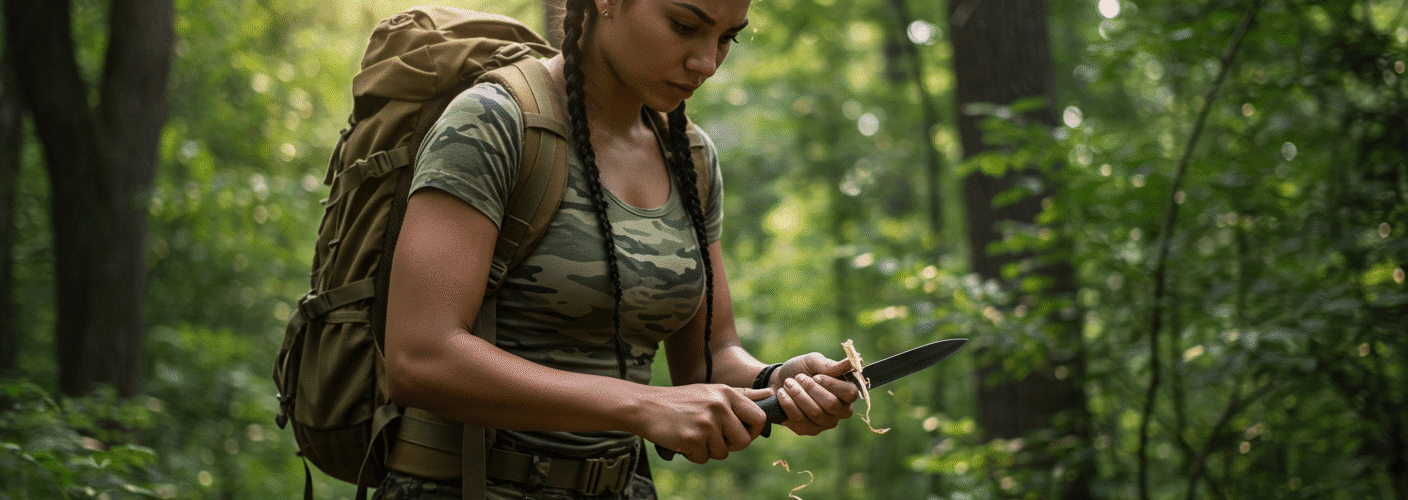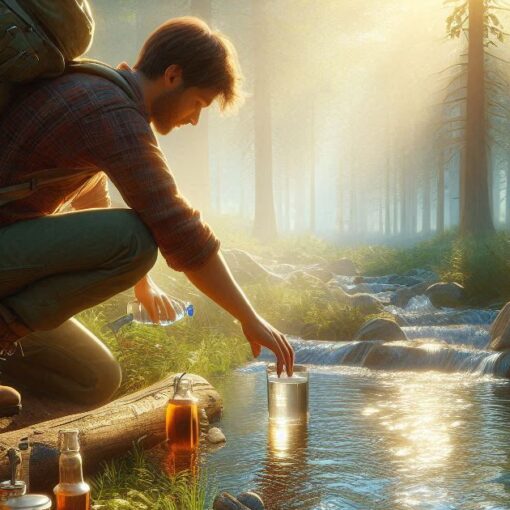Planning ahead is important when it comes to being ready for anything. Picture this: you’re camping with buddies when a storm comes out of nowhere. Do you want to be the one who is frantically looking for a dry space while everyone else is warm and dry under their tarps? No way! Getting ready for the unexpected might convert possible tragedies into just minor problems. So, let’s go into what it actually means to be ready for anything that life or nature throws your way.
Top Takeaways and Key Concepts
- Build and maintain an emergency kit with food, water, tools, and hygiene items.
- Learn about local wildlife and plants to avoid danger and identify useful resources.
- Practice essential survival skills like fire-making, navigation, and shelter-building.
- Update gear regularly and tailor supplies to seasonal weather and family needs.
- Train your mind to stay calm under pressure using planning, breathing, and preparation.
Summary of This Article
This article explains why survival preparedness is essential for handling unexpected emergencies in the outdoors. It emphasizes starting with a solid emergency kit that includes food, water, tools, and safety supplies, while also practicing regular maintenance to ensure everything works when needed. Knowing your environment is just as important—recognizing local plants and wildlife can prevent accidents and provide safe food options. The article stresses learning essential survival skills like navigation, fire-building, and shelter construction to stay safe and self-sufficient. Mental preparation also plays a key role, with tips on staying calm and confident under pressure. Finally, joining outdoor communities and practicing regularly helps build knowledge, confidence, and readiness for any adventure.
Video Version of This Article
Understanding the Basics of Survival Preparedness
Please Note: This post may contain affiliate links. If you click one of them, we may receive a commission at no extra cost to you. As an Amazon Associate, I earn from qualifying purchases.

What is survival readiness, first of all? It’s all about being prepared for unforeseen events or emergencies. Having a plan makes all the difference, whether you’re dealing with a natural disaster like a storm or earthquake or just getting lost on a hiking route. I mean, who wants to be out exploring and not have any food or water? That sounds like a bad dream!
To get things started, think about making an emergency kit. This pack should have the basics, such water (at least one gallon per person per day), non-perishable foods (like granola bars and beef jerky), first aid supplies, flashlights with additional batteries, and maybe even some fun things like playing cards to keep spirits high while you wait! A lot of individuals don’t think about this important stage until it’s too late, which is interesting.
Knowing your surroundings is another crucial part of being ready. It may sound like something you would see on a nature show, but getting to know the plants and animals in your area can make a big difference while you’re out in the wild. Do you really want to come across a snake while trekking and then freak out and run away screaming? Or, even worse, eat some toxic berries by mistake because they looked nice? I didn’t think so!
Do some study on the kinds of animals that live in your area to start. Are there bears hiding around? What about snakes or other animals that might not like it when people show up unannounced? Knowing what animals are around you can help you stay safe. For example, if you know there are rattlesnakes in the area, you’ll be more careful about where you step and how loudly you walk through the brush. Also, looking for indications of wildlife, like tracks or droppings, can help you figure out what animals are living in the region.
Let’s talk about plants now! Some people might assume they can just scavenge without any problems, but that’s a dangerous game. Learn about the plants and berries in your area that you can eat. Did you know that dandelions are completely safe to eat? These small yellow weeds might keep your stomach from grumbling on a lengthy journey, from their leaves to their blossoms. On the other hand, there are a lot of plants that look safe but are actually very dangerous if you eat them, such poison ivy or hemlock. So it’s very important to know this. It could mean the difference between enjoying a great snack and spending hours regretting your life choices.
And speaking of munchies, think about how cool it would be to amaze your buddies with your new understanding of wild mushrooms! It may sound like something from “Survivor,” but knowing how to find edible mushrooms may make a normal trip into a great food adventure. Imagine yourself pointing out chanterelles or morels while everyone else eats bland granola bars. Before you know it, you’ll be the wilderness gourmet chef! But keep in mind that identifying mushrooms can be dangerous; certain look-alikes can kill you.
Joining local outdoor groups or programs might also help you learn more about the environment. These communities typically provide lessons on survival skills and plant identification taught by experienced specialists who like sharing their knowledge (and maybe even some wild cuisine). This will not only help you learn more about what nature has to offer, but it will also help you make friends with other adventurers who like the same things you do.
Accepting this link to nature makes our time outside more enjoyable and keeps us safe and informed while we’re out there. It’s not just smart to know what’s around us; it’s also really empowering!
Building Your Emergency Kit

Now that we’ve gone over the essentials, let’s talk about making that very crucial emergency pack in more depth. Pick a robust backpack or container first that can handle the weather. No one wants their goods to get wet because they chose a cute tote bag over something useful.
After you’ve organized your container, think about adding knives or multi-tools. These useful tools can do a lot of things, including open cans and whittle sticks for cooking marshmallows. Priorities! Don’t forget to bring things for personal hygiene. Trust me, nothing is worse than being stuck somewhere without toilet paper!
I also suggest bringing a whistle and a mirror to get people’s notice. You never know when you’ll need to get the attention of rescuers or just your friends who got lost. And let’s be honest: if you’re deep in the woods, yelling “hey!” might not work.
Finally, don’t forget to keep your equipment up to date! It’s simple to just throw everything in a bag and forget about it, but let’s be honest: how many of us have gone through our emergency supplies and found old batteries or granola bars that went bad in 2012? Oh no! It’s important to keep your survival pack up to date since you don’t want to be running around like a chicken with its head chopped off when tragedy comes (and let’s hope it doesn’t!).
Let’s discuss about food first. Take a few minutes every few months to verify the expiration dates. This isn’t just a waste of time; it’s important to make sure that the snacks you want aren’t as stale as last week’s bread. You might be surprised at how rapidly some things go bad, especially things that are wet or that can spoil. If you find something that’s past its prime, throw it away and get new ones. And while you’re about it, why not make your snacks better? You could trade in those old protein bars that taste like cardboard for something better, like beef jerky or trail mix with nuts and dried fruits.
Now let’s talk about gear. If your flashlight flickers more than a disco ball or your first aid kit is missing half of its stuff, it’s time to step in. Check all of your gear often and replace anything that looks like it’s getting worn out. Your treasured multi-tool might not be as good as it used to be after all those camping trips, or the tent might have mysterious holes in it because raccoons were too excited after one too many expeditions. No matter what, it’s important for safety to keep everything in good functioning order.
You can also use this regular check-up to get new equipment! These days, technology changes quickly. There may be new tools that could make you much better at being prepared. Buying new gear can make a huge difference when you need it most, from lightweight camping stoves to small water filtration systems.
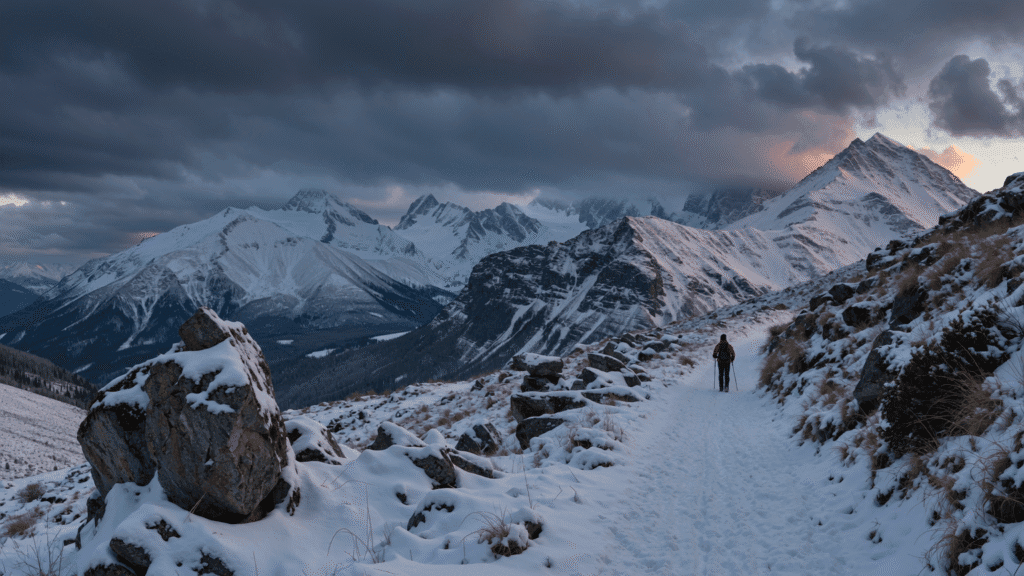
And don’t forget about the changes that happen with the seasons! Depending on whether you’re getting ready for winter storms or summer heat waves, your needs may change. For example, adding heated blankets and hand warmers makes sense in the winter, while making sure you have lots of ways to stay hydrated is important in the summer. By customizing your equipment to meet the needs of each season, you can stay one step ahead of anything nature throws at you.
Lastly, I want to stress how crucial it is to include family members in this process as well! Have fun updating the kit together. You could even make it a small scavenger hunt where everyone helps cross things off a list. This not only makes everyone responsible, but it also gives family members more faith in what they would do in an emergency.
So, don’t forget to keep those kits up to date and working! Being ready isn’t only about having things; it’s also about having the appropriate things when you need them the most!
Skills Every Adventurer Should Learn

It’s not enough to have gear; you also need abilities to survive. Think about this: You are stranded in the woods with just your pocket knife and your willpower to help you. It would be fantastic if you could ignite a fire without using matches. Knowing how to build a fire, for example, can keep you from having to spend cold evenings shivering under trees.
Another important skill to learn is how to use maps and compasses to find your way. To be honest, if you only use GPS gadgets, you could be lost if the technology breaks. And we all know how unreliable those little screens can be at times! Knowing how to read maps gives you confidence, so you’ll always know where to go, no matter where your adventure takes you.
Also, knowing how to build a shelter could be useful in case of bad weather or an emergency when you can’t locate a place to stay. Imagine this: you’re outside enjoying nature when the sky suddenly opens up as in a disaster movie. It’s raining, and all you can think of is how nice your couch looks right now. But if you’ve practiced how to build a shelter ahead of time, you’ll be ready to face Mother Nature!
First, let’s talk about the things that might be around you. These aren’t just random things on the ground; they’re your new closest friends: branches, leaves, and pine needles. Knowing which materials perform best might make a big difference when you need to build a temporary shelter. For example, strong branches can be the frame of your building, and softer leaves can keep it warm and dry. It’s like being MacGyver, except with sticks and leaves instead of tools!
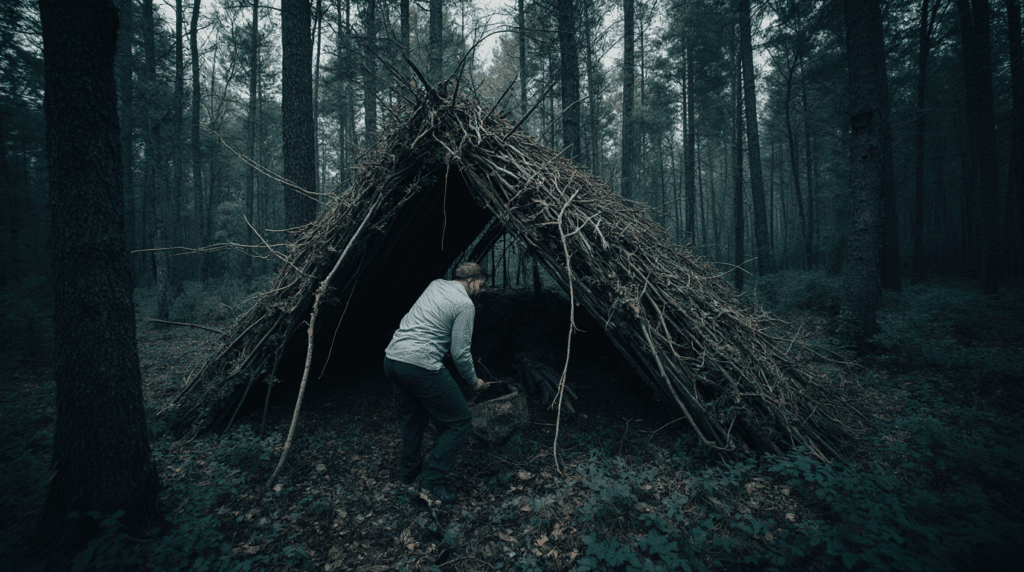
You don’t have to be Bear Grylls to start. A modest lean-to is a great first project. Get two robust branches and lean them against a tree or similar solid surface at an angle. Then, place smaller branches next to it for support and cover it with leaves or even grass if you have any. There you go! You have a simple shelter that will keep some rain off your head and keep you warm.
Let’s be honest for a second: this isn’t just about having fun in the woods; it’s about learning skills that could save your life one day! Building a shelter teaches you how to be resourceful, which is an important skill for any adventurer. When you’re caught in the bush without modern comforts, being able to quickly make a good shelter out of whatever you have on hand could mean the difference between comfort and agony.
It’s also really fulfilling to make something useful from scratch utilizing only what nature gives you. It brings us back to our ancestors who had to use these abilities to stay alive long before grocery shops existed. It taps into our primitive inclinations. Once you know how to build one sort of shelter, you can go on to more difficult designs like A-frame buildings or rubble huts.
And don’t overlook the social side of this skill-building activity! Get some friends or family together for an outdoor activity where everyone helps build shelters. You can make it a friendly competition: whomever constructs the strongest construction gets to talk about it until next time (and maybe even get sweets by the campfire). This not only makes people work along better, but it also makes memories that will make you giggle years later.
To sum things up nicely: learning how to build a shelter is not only necessary, it’s also really empowering! The next time you go hiking or camping and dark clouds start to gather above you, don’t freak out like I do when I see spiders crawling near me (really, no thanks!). You’ll know precisely what to do to make your own shelter from the storm. So go ahead and get out there and start working on those talents. An adventure is waiting for you!
Staying Calm Under Pressure

Let’s be honest: it’s not simple to be cool when things get tough. It takes practice! Panic can really take us down paths we’d rather not go, like sprinting right into thorn bushes. Meditation or breathing exercises can help us build mental strength so that we are ready for these times when they come.
One strategy I use is to picture things ahead of time. Imagining myself addressing problems calmly makes me feel more sure of myself when they happen in real life. It may sound foolish, but give it a shot the next time you feel anxious!
There are also online forums where people who love the outdoors share suggestions and stories about how to be ready for survival. It feels like having a virtual campfire where everyone tells stories, gives advise, and maybe even tells ghost stories! But really, these networks may be a treasure trove of information for anyone who wants to improve their survival abilities or just meet other people who enjoy to go on adventures.
You might be wondering where to locate these gold mines of information. There are whole subreddits on platforms like Reddit that are just about survivalism and outdoor skills. If you go to r/survival or r/preppers, you’ll find conversations about everything from basic first aid to complex ways to find your way in the woods. It’s interesting how people from many walks of life get together to share their knowledge and sometimes fight about the best technique to start a fire (hint: there is no one right answer!).
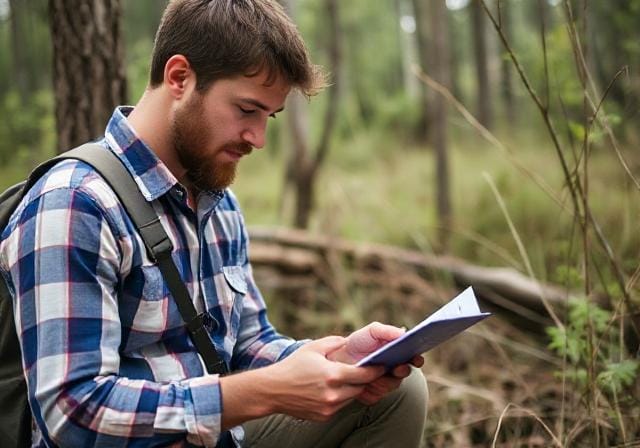
On the other hand, Facebook and other social media sites include groups that focus on being ready for the outdoors. You can join organizations that are based in your area or groups that are open to people from all around the world. Live Q&A sessions with specialists in other sectors, such bushcraft teachers or experienced hikers who have seen it all, are common in these places. It’s like having a personal mentor at your fingertips when you ask someone who’s spent years honing their talents what they would do in a tough circumstance.
The friendship you’ll find among members is what makes these groups so wonderful. Everyone knows how exciting and hard it is to be outside since they’ve done it themselves! Being a part of our community makes you feel like you belong, whether you’re sharing pictures from amazing walks or talking about gear recommendations. You might even meet someone who love camping as much as you do. Who knows? You might even wind up organizing real-life trips together!
It’s interesting that a lot of people talk about both their mistakes and their accomplishments. Because everyone is honest, new people can ask questions without worrying about being judged. We’ve all experienced those times, like when I tried to start a fire with two damp sticks and ended up generating smoke signals instead! When you’re out there trying to live, learning from other people’s mistakes can help you avoid making expensive ones.

Some communities also plan meetups or events where members can get together in person for workshops or skill-sharing sessions. Think about how great it would be to learn how to clean water from an expert while being among other people who are just as excited to learn! These events not only help you improve your skills, but they also bring people in the community closer together.
Joining online support groups is a great approach to improve your journey toward being ready for anything! It’s all part of establishing the support network we need as outdoor lovers: getting great advice from experienced pros and making friends with other adventurers who know what it’s like to be out there fighting the elements. So why not jump into these digital worlds? You never know what great information is just a click away.
Conclusion: Embrace Adventure with Confidence
Being ready for survival doesn’t have to be hard; it’s all about being proactive instead of reactive! Anyone, from newbie campers looking forward to their first trip to seasoned hikers eager for their next challenge, can successfully handle whatever Mother Nature throws at them if they know the basics of preparation, practice important skills, and stay calm under pressure.
So, get your survival gear together immediately. Take command of your experiences by getting ready so that every trip is a fun one instead of a stressful one because of things you didn’t expect!
Frequently Asked Questions
What is survival preparedness and why is it important?
Survival preparedness means being ready for unexpected emergencies like storms, accidents, or getting lost outdoors. It helps you avoid panic and increases your chances of staying safe by having a plan, supplies, and basic survival skills before you need them.
What should I include in a basic emergency survival kit?
A good emergency kit includes water, non-perishable food, a first aid kit, flashlight, extra batteries, a multi-tool, hygiene items, and signaling tools like a whistle or mirror. These essentials help you survive and stay safe until help arrives or conditions improve.
Why is it important to learn about local plants and wildlife?
Knowing your environment prevents dangerous mistakes, like eating toxic plants or getting too close to wild animals. It also helps you find useful resources like edible plants and natural shelter materials that can support your survival if you’re stranded.
What are the most important survival skills to learn first?
Start with fire-making, navigation with a map and compass, and shelter-building. These skills protect you from exposure, help you stay warm, cook food, and guide you back to safety even without GPS or modern tools.
How often should I update my emergency gear and supplies?
Check and update your kit every three to six months. Replace expired food and batteries, test gear, and adjust supplies for seasonal weather changes or new family needs. Preparedness isn’t one-and-done—it requires maintenance.
How can I stay calm during a survival emergency?
Staying calm comes from preparation and mindset. Practice simple breathing exercises and mentally rehearsing emergency scenarios. Confidence grows from experience and planning, which prevents panic and helps you make smart decisions under pressure.
Where can I learn more survival skills and get better prepared?
You can join local outdoor clubs, take survival workshops, or learn from online communities that share survival tips and skills. Connecting with others helps you gain experience, stay motivated, and build a support network for future adventures.
Suggested Resources
Survival Tips: How To Prepare for Emergencies
https://www.redcross.org/get-help/how-to-prepare-for-emergencies.html
Emergency Preparedness | Ready.gov
https://www.ready.gov/
The Ultimate Guide to Wilderness Survival Skills
https://www.wildernesscollege.com/survival-skills.html

Kevin Collier is a seasoned outdoor enthusiast and writer for Trekbug.com, specializing in outdoor adventures, survival strategies, and prepping insights. With a deep love for nature and a commitment to self-sufficiency, Kevin empowers readers to embrace the wilderness confidently. He shares valuable tips, practical techniques, and inspiring stories, helping both novice and experienced adventurers develop essential skills for surviving and thriving in the great outdoors.

